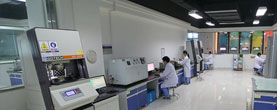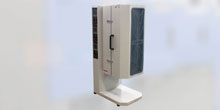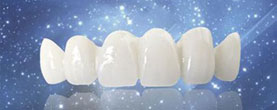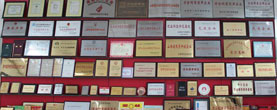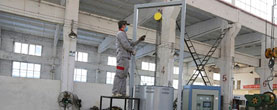耐火材料常温耐磨性试验方法:常温耐磨性试验机
Methods of test for dense shaped refractory products — Determination of resistance to abrasion at ambient temperature
GB/T 18301-2012《耐火材料常温耐磨性试验方法》
主要用于测定成型耐火材料在环境温度下的耐磨性的方法。它也可用于不定形耐火材料。它表明了材料在磨蚀性或侵蚀性条件下的适用性。
标准基本信息
标准编号:GB/T 18301-2012
中文名称:耐火材料 常温耐磨性试验方法
英文名称:Refractory products—Determination of resistance to abrasion at ambient temperature
采用国际标准:ISO 16282:2007《致密定形耐火制品—常温耐磨性的测定》(MOD修改采用)
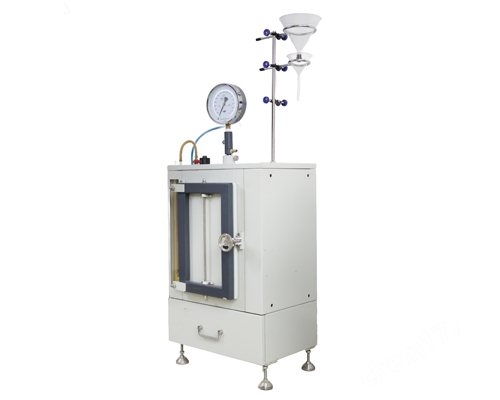
赛特瑞耐火材料常温耐磨性试验机(可选高温耐磨性试验机)
试验原理
用450kPa压缩空气将1000g具有规定粒度级别的P36号碳化硅砂,通过喷砂管垂直喷射到试样的平坦表面,测定试样的磨损体积。
主要设备要求
设备名称:赛特瑞耐火材料常温耐磨性试验机
喷吹装置:每次测定需更换新的玻璃管
供料系统:能在(450±15)s内提供1000g磨损介质,由上部装料漏斗、中部供料控制漏斗(带节流孔)和下部送料漏斗组成
试验箱:密闭箱体,喷吹装置垂直安装于顶部,磨损介质从喷嘴顶端经(203±1)mm距离喷射到试样上。箱内压力需保持在310Pa(32mm水柱)
测量仪器:
液体压力计:量程0~400Pa
真空表:量程0~-0.1MPa
天平:感量0.1g
游标卡尺:分度值0.5mm
试样要求
尺寸:从耐火砖或制品上切割(100~114)mm×(100~114)mm×(25~65)mm的试样,耐磨性好的材料可为100mm×100mm×25mm
表面处理:试验面应为平整的原砖面或无标记的模具底面
预处理:在(110±5)℃下干燥至恒量
试验程序要点
称量试样(精确至0.1g),测量尺寸并计算体积
将试样置于距喷嘴端部(203±1)mm处,试验面垂直对准喷嘴
压缩空气压力调整至(450±7)kPa
在(450±15)s内喷吹(1000±5)g磨损介质
取出试样去除粉尘后立即称重(不超过10min)
结果计算
磨损体积计算公式:
A= (m 1-m 2)/ρ
式中:
A:磨损体积,cm3
m1:试验前试样质量,g
m2:试验后试样质量,g
ρ:试样体积密度,g/cm3(按GB/T 2997测定或质量/体积计算)
计算结果精确到小数点后两位,按GB/T 8170修约
试验报告内容
应包括:材料描述、标准编号、试样尺寸、样品量、制备条件、试验结果(单值及平均值)、偏差说明、异常现象和试验日期等。
设备校验
使用10~12mm厚的无色透明浮法平板玻璃作为校准样品,两次重复试验数据偏差不超过平均值的7%
ISO 16282:2007 is an international standard titled "Methods of test for dense shaped refractory products — Determination of resistance to abrasion at ambient temperature". It was published in October 2007 as the first edition by ISO Technical Committee TC 33 (Refractories)
Scope and Application
This standard specifies a testing method primarily for determining the abrasion resistance of shaped refractory materials at ambient temperature. Key points include:
Primary application: Dense shaped refractory products
Extended application: Can also be used for unshaped refractory materials
Purpose: Provides an indication of material suitability for service in abrasive or erosive conditions
Test principle: Measures the volume of material worn away under standardized abrasive conditions
The standard helps evaluate how refractory materials perform in environments subject to mechanical wear from moving solids or erosive conditions, which is critical for applications such as furnaces, kilns, and other high-temperature industrial equipment


